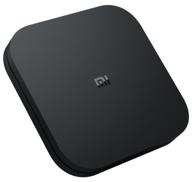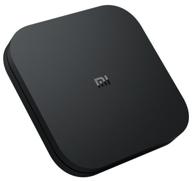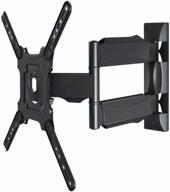
Review on 🔌 4K HDMI Balun Extender - gofanco HDBaseT 2.0 4K:4:4 HDR CAT6 HDMI Over Cable (230ft @ 1080p, 130ft @ 4K) with Loopout, Auto Downscaling, Bi-Directional IR, Power Over Cable, EDID, 18Gbps, HDCP 2.2 by Guadalupe Culii

So good I bought two!
HDMI over Ethernet was a bit difficult to learn. Before settling on Gofanco, I used another vendor's product with disappointing results, mainly picture dropouts at awkward moments, which turned out to be poor hardware, not my wiring work. I've been very happy since I switched to Gofanco. Gofanco's instructions and recommendations are correct. Their gear worked fine with the same CAT6A cabling. Your best cabling recommendation is Cat6/6A/7 (non-stranded) pre-assembled solid copper cabling directly between the receiver and transmitter, with no patch panels, connectors, or keystone in the middle. What I ended up doing was pretty tight - I had to take care of a patch panel and the aesthetics. So I ran solid Cat6A copper throughout, but I bumped the ends of the main cable against the wall and patch panel. I then used standard Cat6 (not 6A) solid copper cable from the wall/patch panel to the transmitter/receiver. A few notes on Ethernet cables. Shielding. This probably won't help in all but the noisiest environments. The electromechanical properties of unshielded cables actually help products like this HDMI transmitter work properly. Save money and choose a higher quality unshielded cable. What is better quality? Durable copper core. Stranded copper cable (per specification) is suitable for conventional data and gigabit speeds. However, at higher frequencies and 10-gigabit speeds, Stranded's ability to operate at that speed over long distances declines faster than that of solid copper. Keep in mind that this HDMI extender is not based on the Ethernet protocol at all, it just uses one cable. Get a solid copper core cable and you'll have the best experience. Finally I call CAT7. It is not an IEEE certified standard. The performance of CAT7 is in the range of CAT6A. Also, sellers tend to "lie" about the superiority of CAT7 by selling you rebranded CAT6A cables. In the IT industry, CAT7 has a bad reputation for being non-standard (read: proprietary). The jump was made from CAT6 -> CAT8 certified by the IEEE. In many ways, this is a case of "just because a bigger number doesn't make it better". In short, with your cable: * Prefer solid copper core over stranded wires * Use unshielded cables * Cat6A is the best point, but CAT6 works great too * If you can buy pre-made unshielded cable with a 6A copper core, this is it Correct Best Option. Two outputs are used for 2 real monitors, 1 output for 2 real 4k TVs. The third output (4K TV) is a mirror image of Monitor 1. 4K TVs are placed in the office and living room, allowing them to display the same picture from the same source in two different rooms. I used Gofanco's HDMI Loop Out to mirror the 1st sender's output to the 2nd sender. This worked brilliantly, overcoming the Windows limits on the number of displays a single source can mirror, and also does not require additional HDMI split hardware. My original signal is 1080p/60 as that is the limit of my office monitors. Just to check, I drove 4k to TVs myself. While it ran fine - no dropouts or crashes - the GPU had performance issues with the game at 4k. Until I buy a more powerful GPU, 1080p is perfectly acceptable and is consistently a good level of performance for what I'm gaming. I am very happy with it. If I've had a complaint about these devices getting hot, use them in well-ventilated areas to keep them cool. At the time of writing this, I've been using the first of the two for a year and a half, and it's working just as well now as it did on day one.
- Great for a small home
- Annoying
New products
Comments (0)
Top products in 📺 Television Accessories
Another interesting products
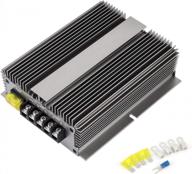
HOMELYLIFE 600W High Power Voltage Reducer DC 48V 60V 72V Step Down To DC 12V 50A Buck Converter Waterproof Module Car Truck Power Regulator Transformer

12 Review

Germany France Travel Power Adapter,TESSAN Schuko Plug With 2 USB Ports 2 AC Outlets, US To European Europe German French Spain Iceland Norway Russia Korea Adaptor(Type E/F)

17 Review
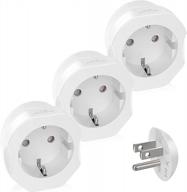
VINTAR EU To US Plug Adapter 3-Pack For Easy Travel: Europe To USA Converter For Spain, France, And More, Compatible With Type C/E/F Plugs - European To US Power Adapter Solution

11 Review
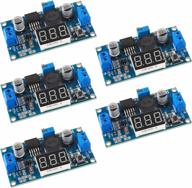
Dorhea LM2596 DC-DC Buck Converter Step-Down Regulator 4.0-40V To 1.25-37V DC 36V To 24V To 12V To 5V Volt Power Supply Module With LED Voltmeter Display Compatible With Car Motor Buck

16 Review




